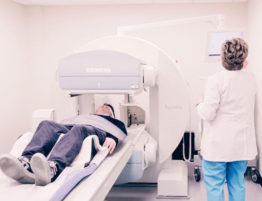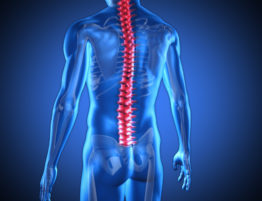While pilot error usually plays a part in aircraft accidents but problems with the aircraft or its component parts may contribute to the accident or the severity of injuries suffered. In those cases, the manufacturer of the aircraft, or the manufacturer of a component part, may share the legal blame with pilots for the crashes or for the injuries the accident caused under the legal theory of strict liability.
What Is Strict Liability?
Unlike litigation against a pilot or operator, a claim against a manufacturer does not require proof that negligence caused the accident. In almost all states, a victim can hold a manufacturer or seller “strictly liable” if it can be proven that a defect in the product was a cause of the injuries.
The doctrine of “strict product liability” was created to make it easier to sue manufacturers in product defect cases by switching the focus to the safety of the product rather than the conduct of the person using the product, in this context an aircraft. The judges who created these laws have said that manufacturers in a high-risk industry must design, manufacture and warn in accordance with the foreseeable risks of using their product.
Product liability law varies from state to state. In several states, a manufacturer may be held strictly liable for a defective product if the product is “unreasonably dangerous” for use by an ordinary consumer. A growing majority of states use a slightly different analysis called a “risk-benefit” analysis. In those states a manufacturer may be held strictly liable if the product fails to perform as safely as an ordinary consumer would expect the product to perform when it is used in a reasonably foreseeable manner. The “risk-benefit” analysis test requires the jury to decide if the risk associated with the design of the product outweighs the benefits of the design. In an aviation strict liability claim, the jury will decide whether there is an alternative, mechanically feasible design for the product that could have been implemented by the manufacturer at the time it was sold. The focus is on the “state-of the-art” at the time of manufacture.
Three Types of Strict Product Liability
To establish strict liability in a product liability lawsuit, the plaintiff must show that:
- The product was defective when it left the defendant’s control
- That the product was used in the intended manner or a reasonably foreseeable manner
- That the product caused plaintiff’s injury.
Strict liability can arise as a result of a defect in design, manufacture, or failure to warn.
Design Defect
A design defect is one in which a whole product line or every product or that particular model is dangerously deficient. This is where courts apply the “unreasonably dangerous” test or a combination of the consumer expectations and “risk-benefit” test to determine if the design is defective.
Manufacturing Defect
If the manufacturer fails to fabricate the product correctly, a manufacturing defect may exist. Thus, if the finished product is substandard by comparison to identical products in that product line, the manufacturer may be held liable for causing the anomaly and failing to catch the defect, before it was sold to a consumer. Manufacturing defects include the use of substandard materials, faulty assembly, etc.
Failure-to-Warn Defect
If manufacturers fail to provide adequate warnings or instructions for use, they can be held strictly liable for failure to warn. There are two types of warnings:
- General instructions that accompany the product. A good way to look at this is that the instructions are a part of the product. If the instructions are ambiguous or insufficient, the product cannot be used safely (i.e., operating limits, weight and CG limits, etc.).
- Specific warnings of a danger that the manufacturer knew or should have known about at the time of sale or discovered after sale. (Emergency procedures, placards in a cockpit, warning labels on equipment, etc.)
Adequate Warnings as a Defense
The law requires manufacturers to give warnings to foreseeable users about newly discovered product defects. Whether the manufacturer will be held strictly liable in such circumstances will depend on whether the warning was calculated to reach the foreseeable user in such a fashion as to enable that user to minimize the danger.
General Aviation Revitalization Act (GARA)
Congress passed the General Aviation Revitalization Act (GARA) in 1994. It protects manufacturers of non-commercial aircraft (light aircraft and business aircraft with maximum seating of less than 20 passengers) from product liability lawsuits for defects on aircraft older than 18 years. This means that once an aircraft and its original components reach 18 years of age, the manufacturer cannot be held responsible for an accident caused by a defective product. As a result, lawsuits are often brought against the pilot, the owner of the aircraft, mechanics, replacement component part manufacturers, and aircraft distributors.
Conclusion
Aviation claims against manufacturers of aircraft or component parts requires a detailed understanding about aviation and the rules and regulations of the FAA and specific laws related to aviation. If you have suffered injury or the death of a loved one due to an aviation accident, and you suspect a defective product is to blame, contact an attorney with experience in aircraft litigation.
Call Our Aviation Accident Attorneys for a Free Consultation
If you were injured in a plane crash, or a loved one was killed in an aviation accident, you need a law firm that has experience in litigation aviation accident claims. From Long Beach, CA law offices, our experienced aviation injury and wrongful death trial lawyers can help you get the compensation you deserve. Contact our lawyers today for a free, no obligation legal consultation.
- Who can be held responsible to the injured parties in an air crash?
- Can the owner/operator be held criminally liable?
- What is the Statute of Repose?
- What is the FAA?
- What is the NTSB?
- What is GARA?
- What are the most common causes of aircraft accidents?
- Do the same laws apply to commercial aircraft and private aircraft?





